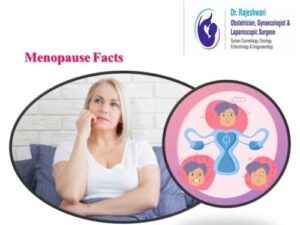The infection of the female reproductive organs mostly occurs when the bacteria that cause sexually transmitted diseases spread through the vagina and reach the uterus, fallopian tubes, and ovaries. This condition is known as a pelvic inflammatory disease (PID).
Women don’t realize that they have been suffering from Pelvic inflammatory disease – until they experience severe pelvic pain or when they have trouble getting pregnant. This is due to the fact that PID doesn’t cause any symptoms – and some women may experience subtle and mild symptoms. In a majority of cases, the signs and symptoms associated with this condition are mild and less severe.
Pelvic inflammatory disease symptoms
This condition usually goes unnoticed in many women as it is mostly asymptomatic. However, if symptoms present, they may be mild and subtle – owing to which most of the women having this condition fail to recognize them. The typical signs and symptoms, if present, may include the following:
- Lower pelvis or abdominal pain
- Abdominal pain may be mild to severe
- Problems with urination
- frequent, painful, or difficult urination
- Pain during sexual intercourse
- Fever, body pain
- Bleeding during intercourse or after intercourse
- Abnormal uterine bleeding
- Bleeding between periods
- Heavy vaginal discharge or abnormal discharge with an unpleasant odour
PID Causes
Sexually transmitted bacteria – especially chlamydia and gonorrhea infections are mostly responsible for causing PID. Unprotected sexual intercourse is the major reason for their transmission to healthy individuals. Another cause is the disturbance caused to the cervix (which is a natural barrier) during menstruation, abortion, miscarriage, and after childbirth. In some rare cases, insertion of an IUD (intrauterine device) may cause the bacteria to enter the reproductive tract. Similarly, any surgical procedure may also lead to infections of the reproductive tract.
When should you see a gynaecologist if you think you have PID?
You must seek immediate medical help if you have the following signs and symptoms associated with PID:
- High fever (higher than 101F)
- Heavy vaginal discharge with bad odor
- Nausea and vomiting
- Severe lower abdominal pain
Even if you don’t have any serious signs and symptoms that indicate PID, you should still see a gynaecologist as soon as possible. Heavy bleeding in between periods or vaginal discharge with bad odor, painful urination, may also indicate sexually transmitted infection. Unaddressed sexually transmitted infection (STI) can lead to PID. Prompt treatment will help in minimizing the spread of infection and preventing PID.
Pelvic Inflammatory Disease Risk factors
There are many factors that can increase the risk of Pelvic inflammatory disease (PID) in women. They include:
- Women age around 25 and above who are sexually active are at risk.
- Unprotective sex (without using a condom).
- Having sex with multiple sexual partners.
- Previous history of PID or sexually transmitted infection.
- Having sex with a person who has multiple sexual partners.
- Regular Douching (this will disturb the natural microbial flora of the vagina – good vs bad bacteria) can cause PID.
Pelvic Inflammatory Disease Complications
Untreated pelvic inflammatory disease can cause the formation of scar tissue and abscesses (pockets of infected tissues) in the reproductive tract – which may cause permanent damage to the female reproductive system. The following complications may result due to the damage caused to reproductive organs.
- Infertility
- Ectopic pregnancy
- Ovarian Abscesses
- Chronic pelvic pain
Talk to your gynecologists’ regarding the measures you can take to minimize the risk of pelvic inflammatory disease (PID) – in addition to practicing safer sex.





